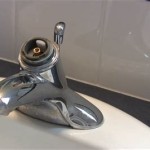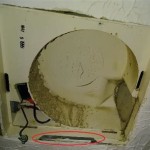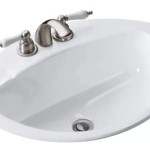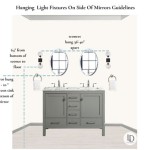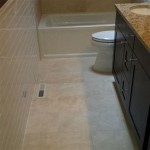How to Open a Bathroom Door Lock Without a Key
Being locked out of a bathroom, especially when a key is unavailable, presents a frustrating and sometimes urgent situation. Understanding the common types of bathroom door locks and employing appropriate methods to bypass them can alleviate this problem. This article outlines various techniques for opening bathroom door locks without a key, emphasizing safety and minimizing potential damage to the door or locking mechanism.
Before attempting any of the methods described, it is prudent to consider the urgency of the situation. If a medical emergency or other critical circumstance exists, prioritizing immediate assistance by contacting emergency services is paramount. For less urgent situations, assessing the type of lock is the first step in determining the best course of action.
Bathroom door locks are typically designed for privacy rather than security. This means they are generally simpler mechanisms compared to exterior door locks. The most common types encountered include push-button locks, privacy levers with small pinholes, and older-style turn-button locks. Each type requires a slightly different approach to open without a key.
Identifying the Type of Lock
Accurate identification of the lock type is crucial for selecting the appropriate method of entry. A push-button lock is characterized by a small button located on the interior side of the door handle. Depressing this button locks the door, often with a corresponding small hole visible on the exterior side. Privacy levers feature a similar locking mechanism, but typically integrate the button directly into the lever handle. Turn-button locks, common in older homes, employ a small knob or button that rotates to engage the locking mechanism.
Once the lock type is identified, the tools required can be gathered. These tools are generally common household items and include items such as paperclips, small screwdrivers (both flathead and Phillips head), credit cards or similar thin plastic cards, safety pins, and thin metal wires. The choice of tool will depend on the specific locking mechanism in place.
Methods for Opening Push-Button and Privacy Lever Locks
Push-button and privacy lever locks are often the easiest to bypass due to their simple design. The primary method involves using a small, rigid object to depress the locking mechanism from the exterior side of the door. The small hole present on the exterior side provides access to the button or pin that controls the lock.
A straightened paperclip is a common and effective tool for this purpose. Unbend the paperclip, creating a straight, rigid end. Insert the straightened end into the small hole on the door handle. Apply gentle pressure and attempt to depress the internal button or pin. You may need to wiggle the paperclip slightly to find the correct angle. Once the button is depressed, the door should unlock. If a paperclip proves too flexible, a small screwdriver or safety pin may offer more rigidity and leverage.
In some instances, the hole may be obstructed or the button may be difficult to depress. In such cases, applying a small amount of lubricant, such as WD-40 or a similar spray, can help to loosen the mechanism. Exercise caution when using lubricants to avoid staining the door or surrounding surfaces. After applying lubricant, re-attempt depressing the button with the paperclip or screwdriver.
Alternatively, a thin, stiff card, such as a credit card or identification card, can be used. Slide the card into the gap between the door and the frame, positioning it near the latch bolt. Angle the card towards the door frame and apply pressure while simultaneously pushing or pulling the door. The aim is to manipulate the latch bolt and force it to retract. This method may require several attempts and may not be effective if the latch bolt is heavily sprung or if the door frame is tightly fitted.
It is essential to note that excessive force should be avoided when using any of these methods. Applying undue pressure can damage the locking mechanism or the door itself, potentially leading to more extensive repairs. If these methods fail to unlock the door after several attempts, considering alternative approaches or seeking professional assistance from a locksmith is advisable.
Methods for Opening Turn-Button Locks
Turn-button locks, typically found in older bathrooms, present a slightly different challenge. These locks often lack an external access point, requiring a more creative approach to bypass the mechanism. The goal is to manipulate the internal components of the lock without damaging the door or frame.
One method involves using a thin, flexible wire or a small, hooked tool to reach over the top of the door and attempt to turn the button from the inside. This requires a significant gap between the top of the door and the door frame. The effectiveness of this method depends on the height of the door, the height of the individual attempting it, and the type of turn-button mechanism in place.
Carefully insert the wire or hooked tool over the top of the door, aiming to locate the turn-button. Once located, attempt to hook or manipulate the button to rotate it to the unlocked position. This may require patience and precision, as the wire or tool may need to be adjusted several times to achieve the desired result. If the wire is too flexible, it may be necessary to use a thicker wire or a more rigid tool.
Another approach, albeit more invasive, involves removing the door knob or handle entirely. This method requires a screwdriver, typically a Phillips head, to remove the screws securing the knob to the door. Once the screws are removed, the knob and handle can be pulled away from the door, exposing the internal locking mechanism. From here, it may be possible to directly manipulate the latch and unlock the door.
However, dismantling the door knob should be considered a last resort, as it can potentially damage the door or the locking mechanism. Before attempting this method, ensure sufficient knowledge of door knob assembly is available to reassemble the mechanism correctly. Taking photographs or making notes during disassembly can aid in the reassembly process.
If these methods prove unsuccessful, the final option involves removing the door hinges. This requires a screwdriver and potentially a hammer to gently tap the hinge pins out of the hinges. Once the hinge pins are removed, the door can be swung outwards, granting access to the bathroom. However, this method can cause damage to the door frame or hinges and should only be considered when all other options have been exhausted.
Regardless of the method employed, prioritize safety and minimize potential damage to the door, frame, and locking mechanism. If uncertainty persists or if the situation appears beyond one's skill level, contacting a qualified locksmith is the most prudent course of action. A locksmith possesses the expertise and specialized tools to open the door efficiently and without causing unnecessary damage.
Following any successful unlocking of a bathroom door, it is prudent to examine the locking mechanism to determine the cause of the lockout. Identifying and addressing the underlying issue, whether it be a malfunctioning button, a sticking latch, or a worn-out mechanism, will prevent future occurrences of this frustrating situation. Regular maintenance and lubrication of the locking components can ensure smooth operation and prevent future lockouts.

How To Unlock A Door Without Keyhole 5 Simple Solutions

Locked Out Of Your Bathroom 8 Ways To Unlock Door

How To Unlock A Bathroom Door Or Bedroom

How To Open A Locked Bathroom Or Bedroom Door Easy And Fast Method

How To Unlock A Door Without Keyhole Locked In N Out

12 Ways To Open A Locked Bathroom Door Without Key

How To Open A Locked Interior Door When You Ve Lost The Key

How To Unlock A Locked Bathroom Door From The Outside

How To Pick A Lock With Doorknob That Has Push On One Side And Small Circular Hole As The Keyhole Quora

How To Open Bathroom Door From Outside Without Key Unlock In 5 Seconds
Related Posts

